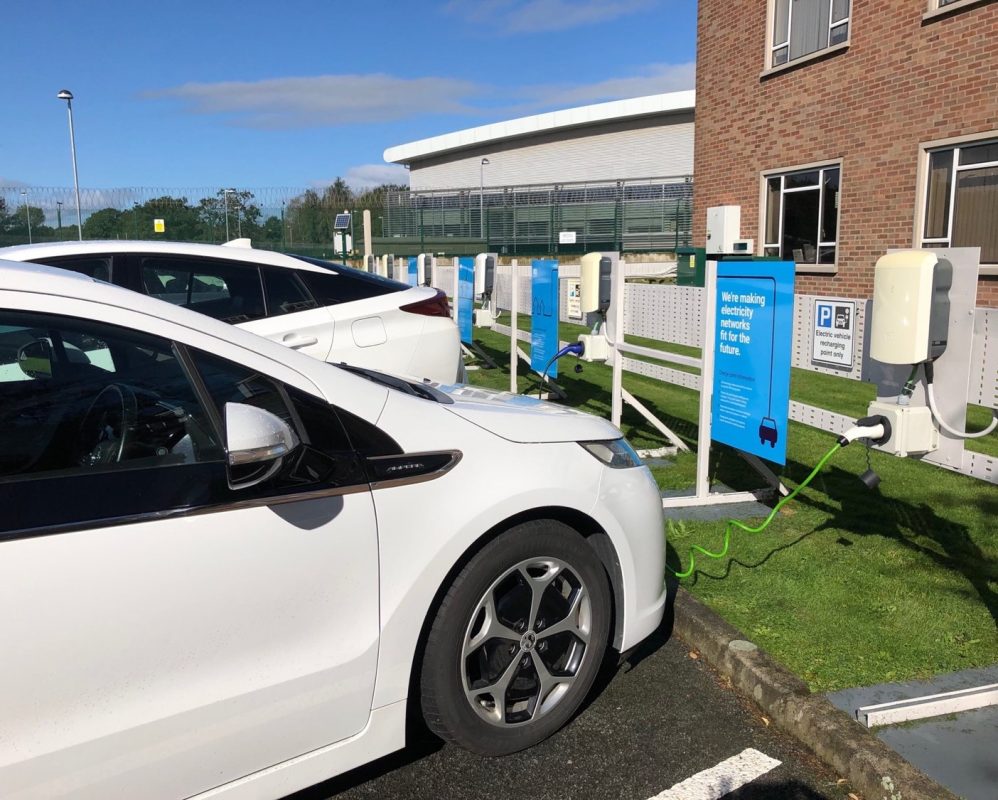
- Categories:
- News
- /
- Announcement
Lower EV tax rates to increase chargepoint demand at work
The uptake of electric vehicles (EVs) has been slow – less than 3% of new vehicle registrations were plug-in vehicles last year.
Adoption is expected to increase, however, as from 6th April 2020 company car tax on EVs will drop from 16% to 0% for the financial year.
“Anything that encourages the uptake of EVs is to be applauded,” says Rob Anderson, Senior Fleet Specialist at Cenex.
“This change has long been needed as the previous Benefit in Kind (BIK) tax regime didn’t benefit low emission vehicle users.
“Now there’s a huge amount to gain and more company car drivers are likely to make the switch, if not for the environment but for the cash in their pocket.”
The savings this brings will be akin to a pay-rise for those already driving an electric company car, while the potential benefits will see many make the switch away from petrol and diesel engines.
Research from DriveElectric shows that eight out of ten business employees who currently opt-out of a company car scheme are ‘likely’ or ‘very likely’ to move back to an electric company car.
Fewer petrol and diesel vehicles on the road is a boost for the environment, as it means less air pollution, better air quality and a significant step on the road to net zero.
Organisations who offer company cars for their employees will have to manage the likely impacts of the BIK changes on a practical level and should start to prepare for them.
Before making the shift to electric cars, drivers will need to understand the technical specifications, notably battery ranges, to ensure their driving requirements are met, and notify employers of any intention to switch.
More EVs will need more chargepoints, and while the public infrastructure is expanding at a vigorous rate, there will be a requirement for more chargepoints at destinations outside of the motorway network.
“If companies start to see that shift, from current petrol and diesel company car users into electric vehicles, they’ll have to investigate the possibility of installing more chargepoints at work.
“In addition, if employees shift from cash for car allowances, or are new to the company car scheme, and select an electric car because of that tax benefit, then you have even more demand for chargepoints.
“Companies need to assess if they have the space to install new or additional chargepoints – be it standard or rapid – and then implement policies to manage those spaces.
“The last thing you want is for drivers to hog a chargepoint once they have sufficient power, therefore blocking those who require a full charge.”
As well as communicating the availability of chargepoint spaces at the office, policies should also be considered for who gets priority, the cost of charging and expensing home charging, and the impact this might have on the business.
“These tax changes will incentivise electric cars, helping the UK and organisations become more sustainable and achieve their net zero targets, but you’ve got to plan ahead to ensure a smooth transition for everyone.”
Four steps to manage an uptake in electric vehicles in your company
1. Make staff aware of tax changes and the benefits
2. Identify who is likely to switch and their journey demands
3. Install required chargepoints
4. Develop company policies for charging
How can Cenex help?
• Educate and engage your staff through workshops
• Identify the best-fit EVs for your organisation
• Distinguish suitable drivers for switching
• Assess your potential infrastructure needs
• Develop implementation strategy and company policies
• Tailored consultancy